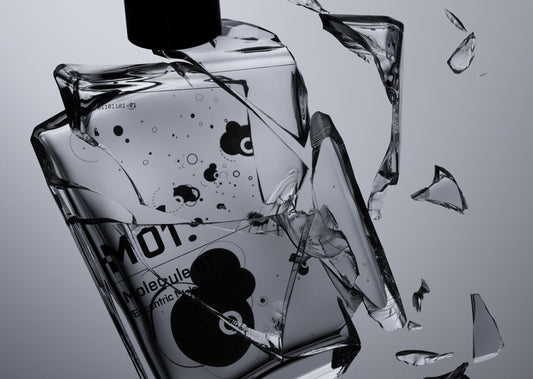– Genuine new trends in fragrance don’t come along very often. And when they do, they are not driven by what’s happening on the catwalk. They are driven by new molecules, just as innovation in say, cars, is driven by new technology.
– Smelling ethyl maltol is like mainlining candyfloss. Maltol is a nature-identical molecule that smells sweet and malty. Chemists tinkered with it and invented ethyl maltol which is way more sugary. The fragrance industry rejected it at first, saying this is not French perfumery, we don’t use stuff like this. Then in 1992 Olivier Cresp used it for Thierry Mugler’s Angel. He combined ethyl maltol with patchouli to get a chocolate-y accord. It was a huge, game-changing success. The gourmand fragrance trend was born and is still going strong.
– The molecule calone was so super-powerful it was only used in things like air-fresheners and soaps. No-one ever imagined it could be in a fine fragrance. The first to break the taboo was Claiborne for Men in ‘89. There is only a trace in there, though, so it’s more of an effect, the fragrance doesn’t actually smell of the sea (calone is the ‘aqueous’ molecule). Aramis’ New West for Her in 1990 was the first fragrance to really project that aqueous note. And then came a huge hit, L’Eau d’Issey in ’92 and we’ve been paddling in aquatic fragrances ever since.
– It’s going to be hard for anyone to find a new natural now. In the last few years we have seen the oudh trend, which is based on a wood that had been completely unknown in the West. Before that there was the introduction of tea notes with Bulgari’s Eau Parfumée au Thé Vert, but that never became a big trend. There may be more naturals to discover, but it will be a trickle. Even with synthetic ingredients, it’s hard to see where perfumers can turn for the truly new. Every research lab in the world has already looked into every corner of every possible molecule.
With fractionizing, you snip out the bits you don’t like, a bit like snipping genes out of DNA strands.
– With everything already discovered where do we go from here? There is an answer: refine what we already have. Chemists are doing this already by fractionizing essential oils. Most essential oils are made up of hundreds of different molecules, not all of which might be desirable. With fractionizing, you snip out the bits you don’t like. It’s a bit like snipping genes out of DNA strands.
– Once again it’s chemistry that allows us to move forward creatively. Patchouli oil, for example, has an unpleasant top note of borneol and camphor. Until now, you couldn’t use patchouli in a transparent fragrance because this unpleasant top note would be exposed. You had to throw a lot of sweet or spicy ingredients in to mask that. Now, chemists can just snip the borneol and camphor from the patchouli. What we are left with is a clean and beautiful patchouli and the freedom to use it in completely new ways.



